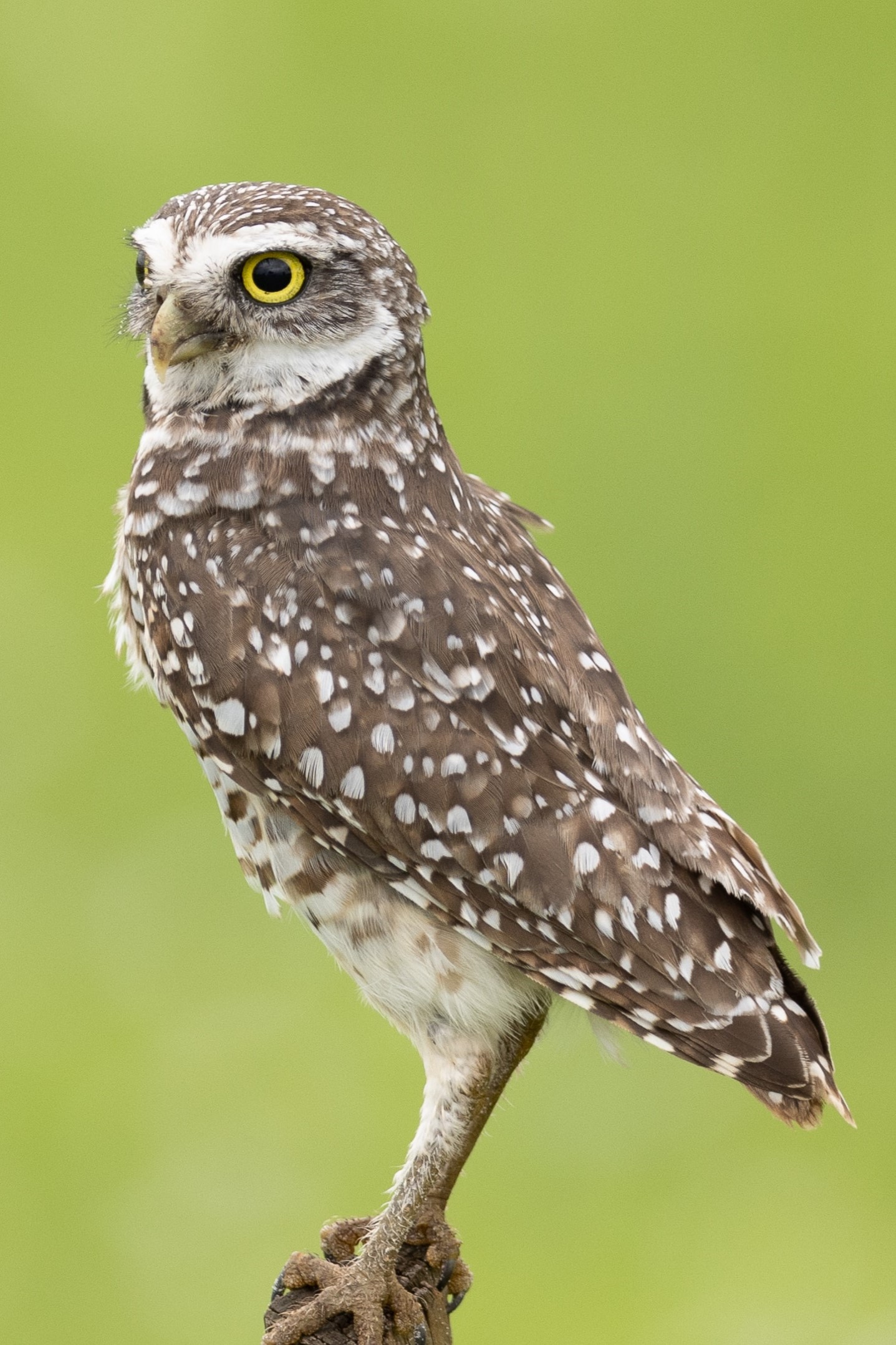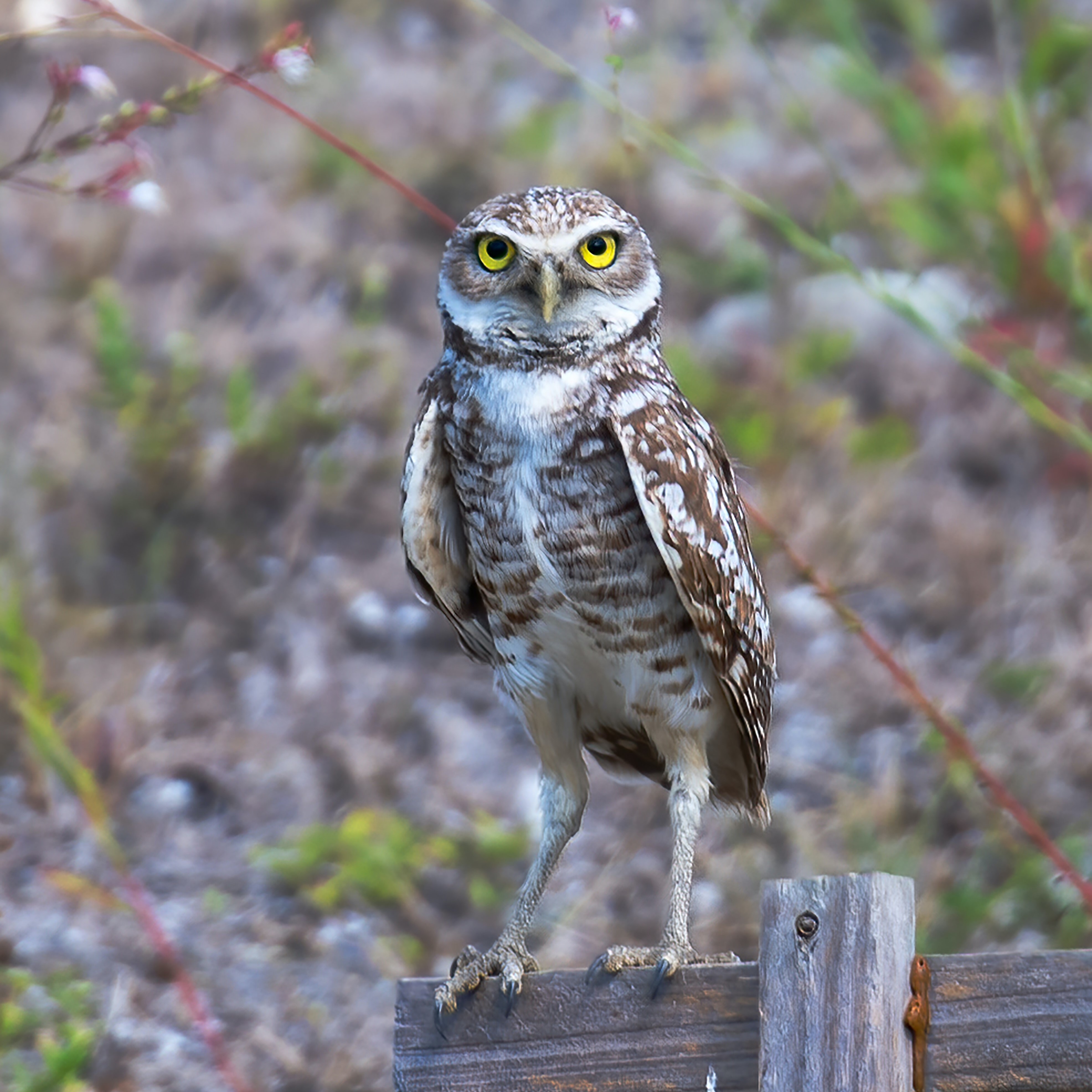Small holes litter the ground throughout the plains, but few pay any mind as to why. To most, these are little more than marks in the earth, akin to footprints or small rock craters. Even with such a large presence of these burrows, only a handful will ever witness the creatures that call these dens home, the predators that live in both the air and the earth. Only when silence stretches across the plains do small feathered heads pop out of these holes, ready to take to the night sky and hunt to fill their bellies.
Burrowing Owls are a common predatory bird found throughout
Vóreios, but most consider them to be rare creatures to see. A small, long-legged owl, these creatures are often confused with
Hawks or other birds of prey when looked at from a profile view as their lengthy legs make them seem wholly other from
Owls at a distance. Their tawny color and stance when perched are hard to determine from a distance as they very much seem like youngling birds of other species.
Those who have crossed paths with Burrowing Owls are often surprised by their size and long legs. These birds often roam during daylight hours, something that leads many to believe that they are not truly
Owls but something more closely related to
Hawks. Some may even be lucky enough to witness these small birds sprinting across open ground after prey, but only those who watch most closely will be able to view this spectacle.
Basic Information
Because of their long legs,
Burrowing Owls are commonly mistaken for
Hawks or even small
Eagles. From a distance, these birds rarely look like other
Owls, especially when they are out during daylight hours.
Anatomy
Burrowing Owls are small birds, often ranging from seven to eleven inches from head to tail. These birds can weigh upwards of half a pound, but their wingspan of roughly twenty to twenty-four inches is considered large for their size. In many places, Burrowing Owls are considered the smallest predatory bird unless there are younglings of another species around.
Most commonly, these birds are a tawny brown color with speckles of a white or lighter tan color. Many describe their coloration to be very similar to some
Hawks on
Vóreios or the young of some
Eagles. These darker colors allow Burrowing Owls to blend in with the earth so they are harder to spot in their burrows.
Burrowing Owls are often distinguished by their long legs that allow them to sprint across distances to trap and catch their prey. It is also common for these birds to make hissing sounds similar to snakes when threatened within their burrows to drive away enemies.
Genetics & Reproduction
During the months of Spring's Evening and Summer's Morning, Burrowing Owls begin nesting. These birds will take one mate throughout their lives and may build loose colonies in areas that have a number of mated pairs. This provides some safety and the ability to reuse nests yearly.
Nests will be lined with a variety of materials, especially those with strong scents that help mask the smell of owlets while also controlling the climate inside the burrow. After nesting is complete, a female Burrowing Owl will lay eggs over multiple days until she has a complete clutch, usually between four and twelve eggs.
Additional Information
Burrowing Owls are commonly found in open plains areas throughout the
Northern Continent but have been known to extend into the edges of the Elven Forest and Little Greenwood. These creatures prefer areas where burrowing animals are common already and where ground cover can hide their dens. In most places, Burrowing Owls will actually force other burrowing animals such as mice, squirrels, and snakes out of their homes to turn them into nests.






I love these guys in real life, and I love your version of them in Isekai <3